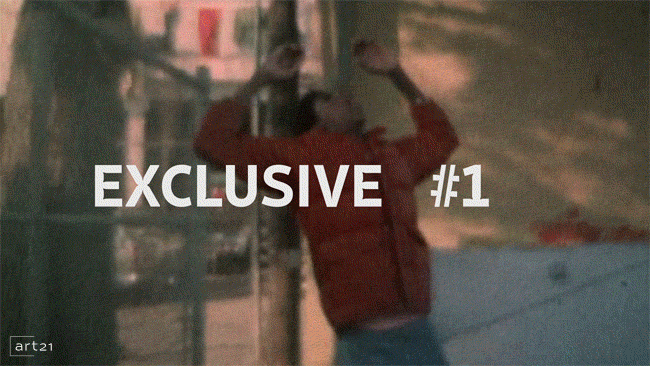As associate producer Ian Forster announced yesterday, this coming Friday Art21 will release the 200th episode in our Exclusive series. To mark this milestone, we’ve asked colleagues and friends in the art world to name their favorite episodes thus far and tell us why they love them. We’ll share their responses here in the Art21 Magazine in a three-part series of video playlists, starting today and continuing through Thursday. This first playlist features artists James Turrell, Carrie Mae Weems, Rackstraw Downes, Beryl Korot, Jessica Stockholder, and many others.
__________
Cecilia Alemani, Curator and Director of High Line Art
“Each of these four videos discuss artists’ varying relationship to exterior space and how landscapes—urban and natural alike—play an important role in both the creation and experience of an artwork.”
“Ursula von Rydingsvard discusses making her sculpture “Ona” in relationship to its site at the Barclay’s Center in Brooklyn, and how her thought process in relating an explicitly female sculptural form relates to the imposing structure of the stadium site.”
“James Turrell’s medium is itself the relationship between interior and exterior, and highlights how powerful the delimitation of this border can be.”
“El Anatsui’s video is obviously very close to my heart as I commissioned him to produce one of the largest artworks on the High Line to date. His work points to the fact that “sky is not a common commodity” and how his work shifts our attention from the familiar skyscrapers of New York’s skyline to the interruptions it makes in the experience of the sky itself.”
“Rackstraw Downes in his video highlights how often we attempt to detach the human element from the natural landscape, and how in his paintings he strives to depict the two elements in their strange but shared habitat.”
___________
Kimberly Drew aka @museummammy, Communications Assistant at the Studio Museum in Harlem; founder of “Black Contemporary Art” on Tumblr
“Carrie Mae Weems should always do video interviews. Her voice is fabulous and her words, like her photography, communicate a narrative that is necessary and often missing from conversations about artistic practice. Moreover, I love watching Exclusive films of artists like Weems and Kerry James Marshall (another personal favorite), who unequivocally detail the experiences of many artists across racial and cultural bounds. I selected this video because it is great to hear Weems’s perspective as she revisits her iconic Kitchen Table series.”
__________
Erin Wright, Director of Artist Initiatives at the Los Angeles County Museum of Art
“So much of the person is captured in this brief segment on Jessica Stockholder. Her candor on the unfinished state of a work and her attempt to explain why it’s unfinished draws you right in. Something about the tone of the interview makes you feel as though she’s talking to you personally.”
“I love this piece because it gives the viewer an unexpected look at what’s happening outside Mary Heilmann‘s studio. It’s a very personal glimpse into her chosen environment and how it comes into her work.”
__________
Matt Wolf, the filmaker behind Teenage, in theaters now
“I first learned of Beryl Korot‘s work when I discovered the avant-garde composer Steve Reich in high school. I’ve seen images of Korot and Reich’s collaboration on The Cave, a video opera in three acts, but I’ve sadly never seen the piece performed live. Later, I learned that Korot was an early video art practitioner who co-edited the seminal video journal Radical Software in 1970. Nowadays, tons of artists use video and the notion of a “multi-channel” installation doesn’t seem so high tech. I loved learning about Korot’s haunting piece Dauchau (1974) in this great interview.”
________
Courtney Gerber, Associate Director of Education, Learning Initiatives at Walker Art Center
“Through humor and the concise language of newspaper headlines, Gabriel Orozco extends an accessible invitation for reflecting on one form for commemorating the dead: the obituary. Language is my chosen mode of expression; however, when writing to someone who has experienced a loss, I find it difficult to escape the expected vocabulary of sympathy: “You’re in my thoughts,” “May you find peace,” “Memories will sustain you,” etc. Orozco’s employment of headlines such as “Master of Lightbulbs” and “Pioneer in Frozen Juice” are somehow freeing for me in their absurdity. They also puncture the tendency of many to summarize a person by what they did rather than how they lived. I’m a champion of understanding people through how they navigate life and taking care not to treat singular accomplishments as fully representative of a person. Who was the pioneer in frozen juice? Give me a hometown and tell me if the pioneer was kind and liked dogs.”





Pingback: “Exclusive” Curated (Part 2 of 3) | Art21 Magazine
Pingback: “Exclusive” Curated (Part 3 of 3) | Art21 Magazine